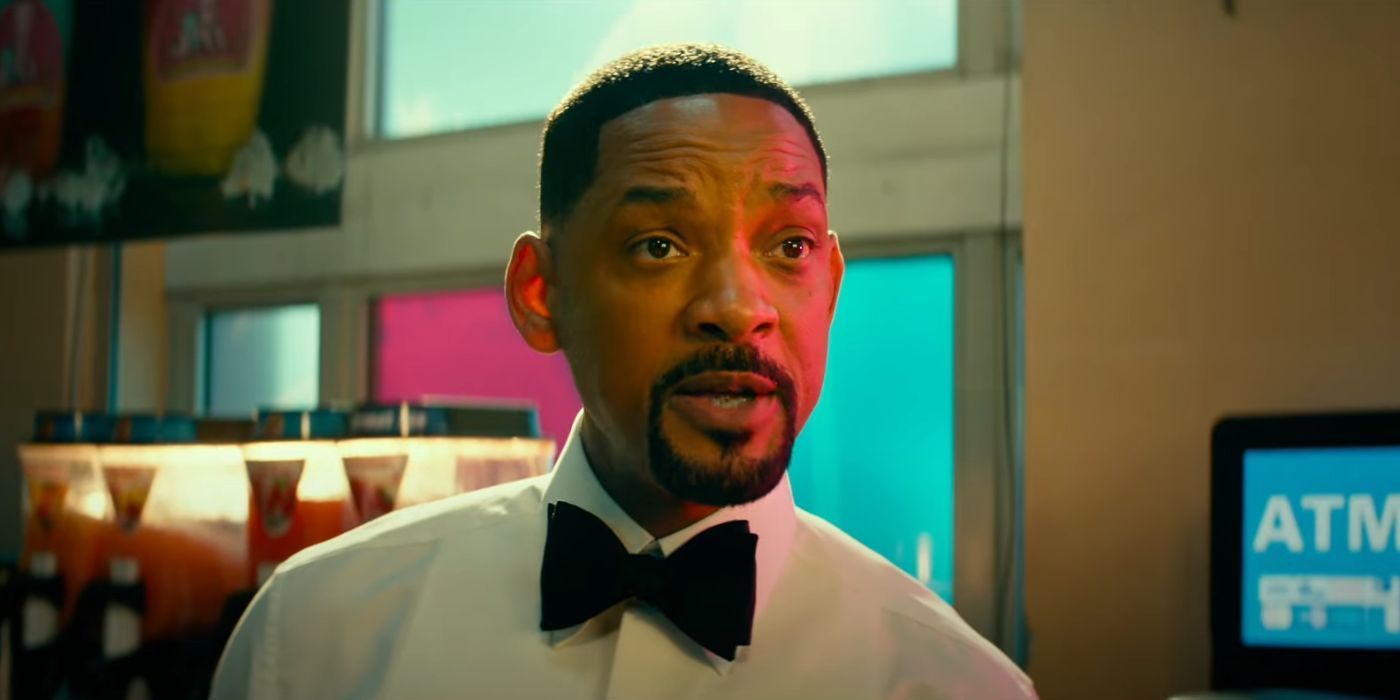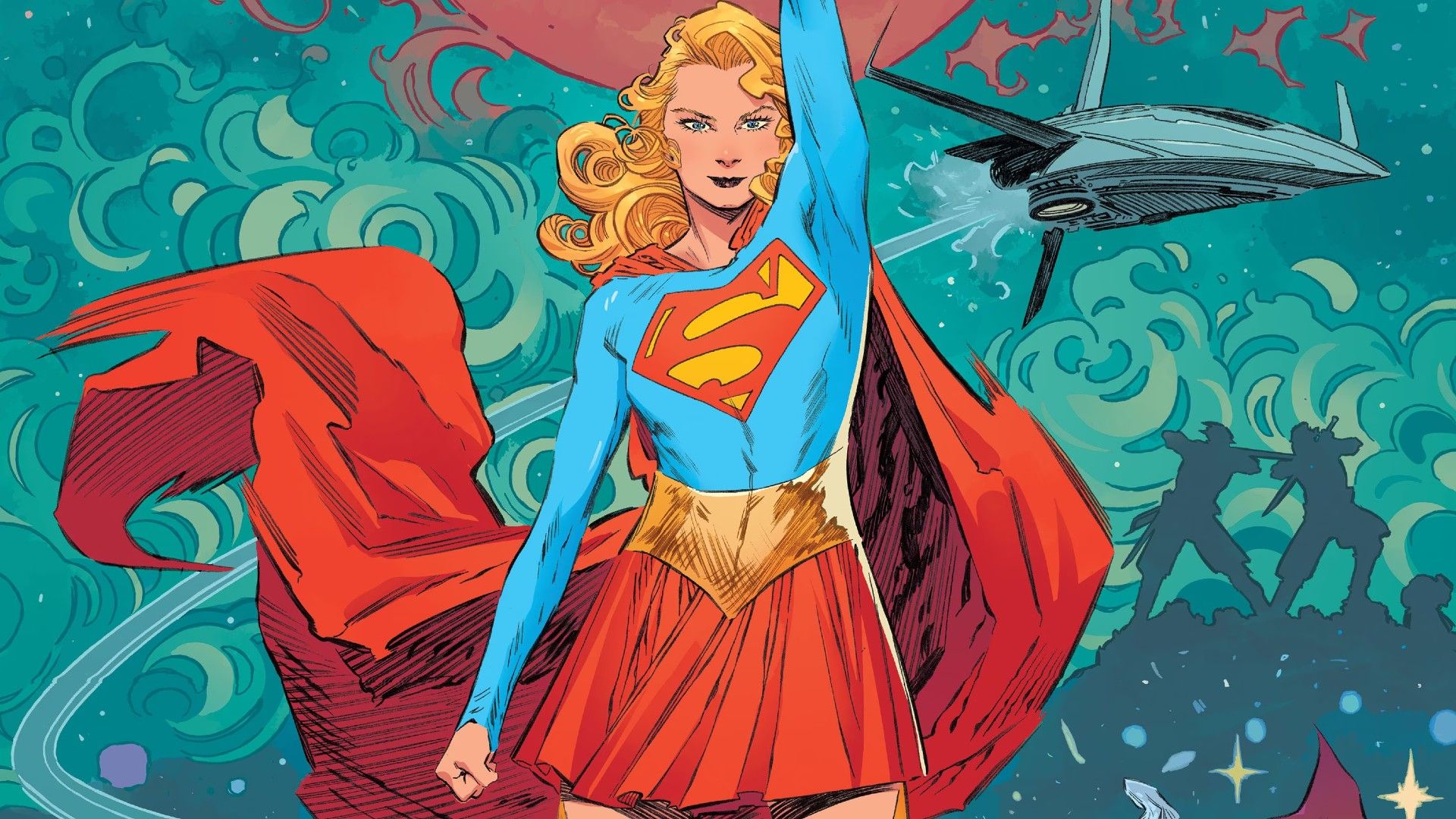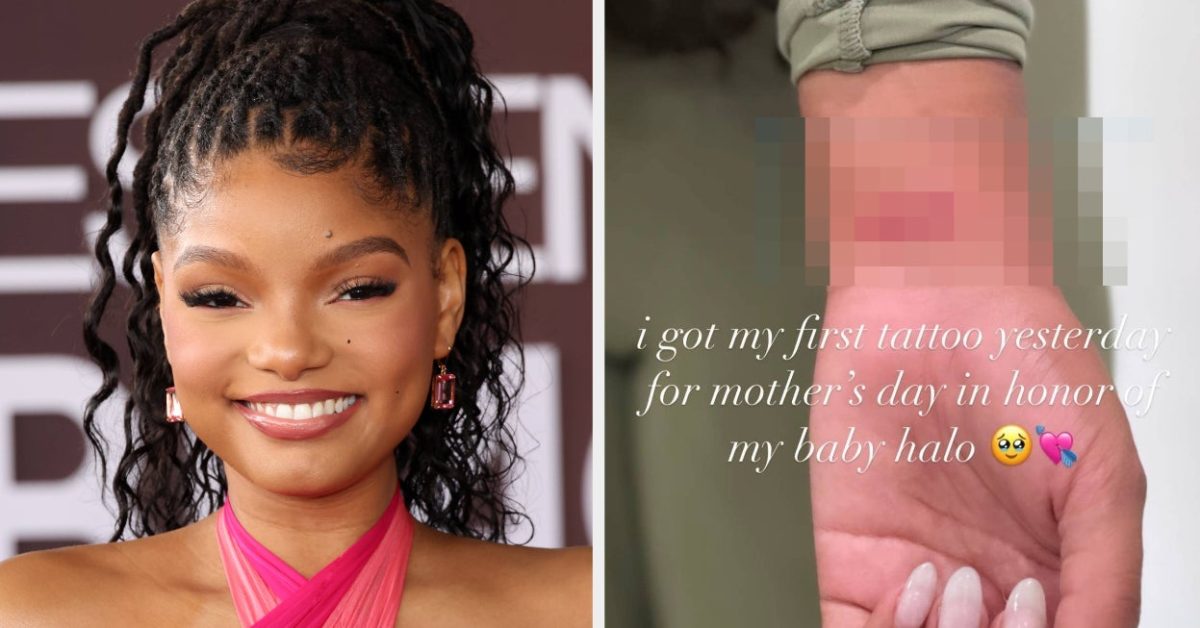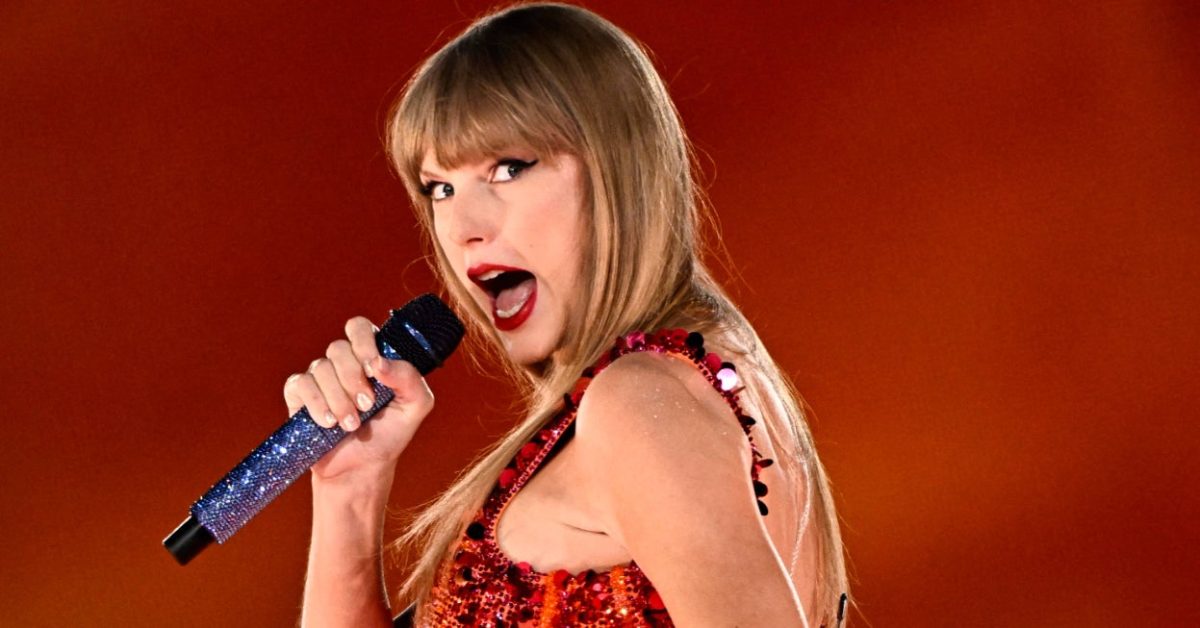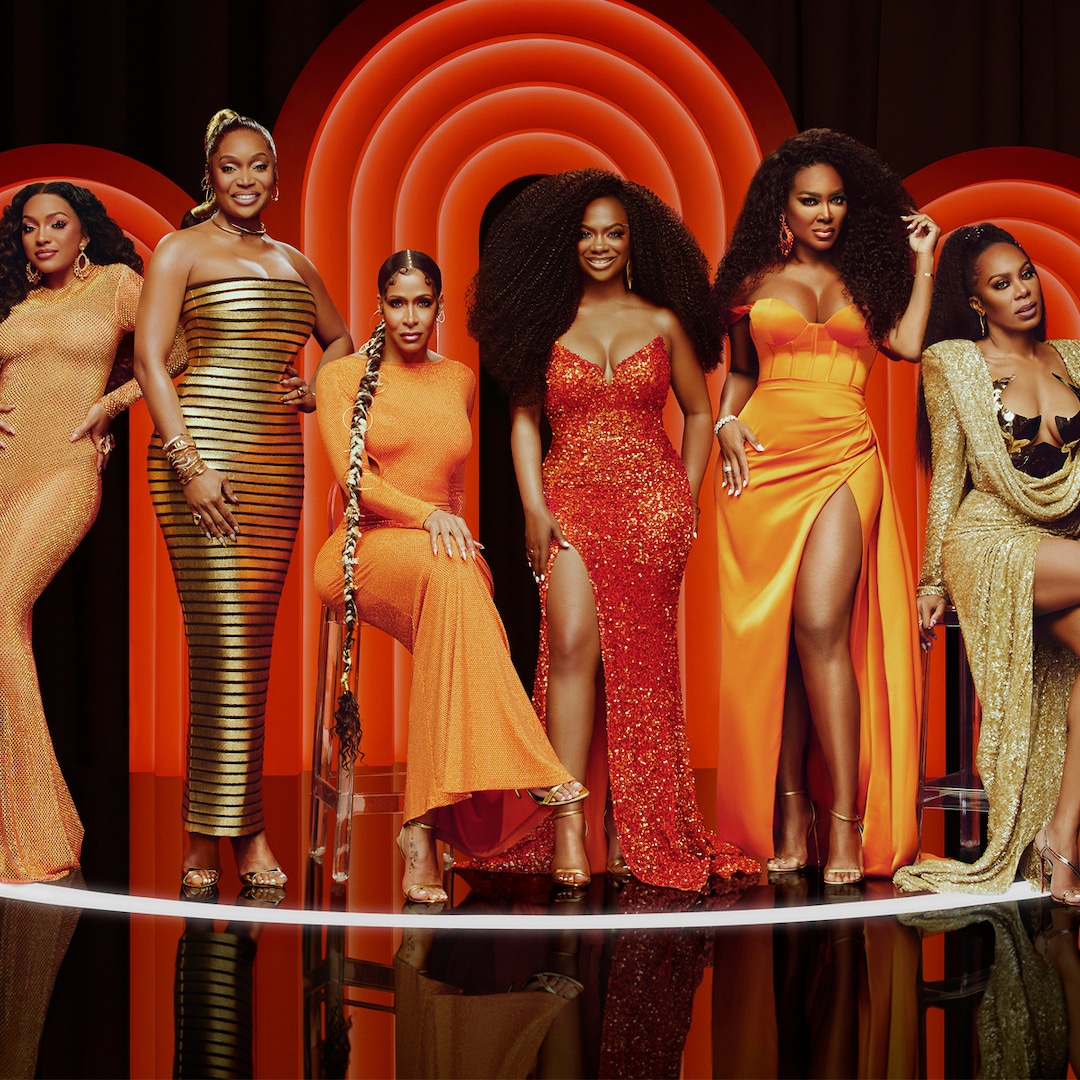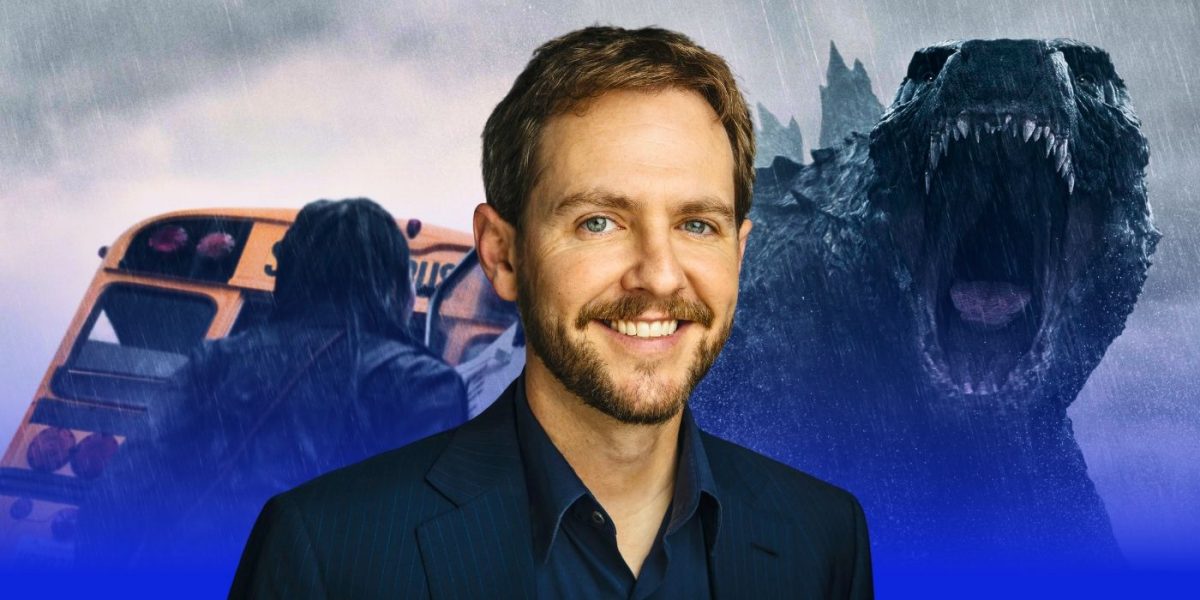
Legacy of Monsters Director on New Titans, Bringing in Kurt Russell
Oct 12, 2023
The Big Picture
Monarch: Legacy of Monsters is a highly anticipated series set in the Legendary Monsterverse, acting as a direct sequel to Gareth Edwards’ Godzilla. The series spans generations, dating back to the 1950s, and stars Kurt Russell and Wyatt Russell as Army officer Lee Shaw, who links to the mysterious program. Director Matt Shakman discusses working with Apple TV+, creating new Titans, and carefully constructing the show within the existing mythology of the Monsterverse.
In Apple TV+’s highly anticipated new 10-episode series, Monarch: Legacy of Monsters, co-creators and executive producers Chris Black and Matt Fraction take legacy to a whole new level. Taking place as part of Legendary’s Monsterverse, Monarch is set as a direct sequel series to Gareth Edwards’ Godzilla but spans generations, dating back to the 1950s, and stars Kurt Russell and Wyatt Russell, who both play Army officer Lee Shaw as the link to the mysterious program.
Before the series premieres on Apple TV+, lucky New York Comic-Con goers will get the chance to check out the very first screening of Episode 1, “Aftermath,” on the Empire Stage. To celebrate, director Matt Shakman spoke with Collider’s Steve Weintraub about the series ahead of the debut of one of the two episodes he helmed. During the interview, Shakman discusses wanting to attack the story from a human perspective, tapping Kurt and Wyatt Russell for the show, and how Monarch fits into the overall Legendary mythology. He talks about working alongside Apple, Legendary, and Toho to continue Godzilla’s story, as well as creating new Titans for the Monsterverse, whether the series will follow comics like Godzilla: Awakening and Godzilla: Aftershock, and how they planned ahead for Titan-sized set pieces. You can check out all of this and more in video above or the full transcript below.
Monarch: Legacy of Monsters features an ensemble cast, including Mari Yamamoto, Kiersey Clemons, Christopher Heyerdahl, Qyoko Kudo, and Anders Holm. It takes place in the same continuity as Kong: Skull Island, Godzilla: King of the Monsters, Godzilla vs. Kong, and Toho’s upcoming Godzilla x Kong: The New Empire.
COLLIDER: One of the things I want to talk about and I want to commend is Apple TV+. I know that sounds weird, but the sci-fi that they’re making is arguably the best on any streamer right now between Foundation, Silo, For All Mankind, and now your show. I’m really blown away by the quality. Talk a little bit about what is over there that’s making all these shows so good.
MATT SHAKMAN: A bunch of smart people who are excited about telling different stories and about being ambitious. They’re great collaborators, they’re passionate about what they’re doing, and for a show like this to take a big swing, to travel internationally. We shot in Tokyo, we shot in Vancouver, Canada, we shot in Hawaii; we moved all over the place just to get the scope and scale to tell the story right. So I think that’s the biggest part is that they’re telling interesting stories, and they’re doing them right. They’re approaching them with the scale that you need to be able to pull them off effectively.
Image by Jefferson Chacon
Well, one of the things I’m gonna say, and this is a jokey thing, but it’s true: I was impressed by how many extras you had in this show. That is a little detail that a lot of people aren’t gonna realize, that a lot of extras cost money, and that’s like movie scale having extras. A lot of TV shows have like four people in the room because that’s what you can afford, and I think that’s one of the things that adds a lot to Apple shows.
SHAKMAN: It’s true, and I think post-COVID, too. While we were filming in COVID, we had to limit our numbers, so I think a lot of the things we’ve gotten used to seeing on television had reduced background for that reason because we were trying to keep things safe and so we limited the amount of people there. For a show like this, being able to see 200 people running down the street screaming about Godzilla, that definitely was something on my bucket list. I was very happy to check that off and to be able to have the resources to do that right. It’s pretty awesome.
How much did you guys in the development process figure out exactly what takes place with Monarch and the characters between where it all starts and, like, 2015? How much is that all filled in in case you get to do more?
SHAKMAN: Chris Black and Matt Fraction, I have to give them all the credit because they developed the show. They created this version of the show, and they worked hand in hand with Legendary because there’s a lot of mythology to wrap our heads around. So they very carefully constructed a show that could work within the existing mythology of the films we’ve seen and the films we’re going to see. To be able to tell a story in multiple timelines requires being really thoughtful about how all those things will intersect. The show is about legacy. You know, we begin with a big gesture towards some of the things you’ve seen before. I don’t want to ruin or spoil anything, but everything sort of comes from that moment. It’s about many generations grappling with a world with monsters, both the good things and the bad things. So, just carefully working within the existing mythology and expanding it wherever we could.
monarch-godzilla-legacy-of-monsters-kurt-russell-wyatt-russell
With a show like this, when everyone’s working on this, how much is Apple saying, “What’s a three-season plan?” Or how much is it just like, “Okay, well, what’s this season gonna be?” Obviously, they’re looking for shows that are gonna last. I don’t think they want to make a show that only goes one season. Maybe I’m wrong. So, how much are you, when you’re figuring all this out, like, “Okay, we’ll go until this point, then Season 2 could be about this?” It’s not like it’s getting written, but at least you have an idea.
SHAKMAN: It’s when you pitch a show from the beginning. You pitch, “What’s the story of the first episode? What’s the story of the first season? And what’s the story for the next five years?” That’s pretty much expected when you go to pitch a company like Apple on the show that you want to create. Of course, things change, right? You have all these plans, and then you realize that this is a more interesting avenue, and things evolve, and you do that hand in hand with the studio, with Apple and with Legendary, to kind of develop and follow where the story wants to take you. I think I’ve found from storytelling that if you rigidly adhere to a plan that you have, the audience sees it coming. In certain ways, you need to take all of the surprises and push them forward and keep surprising yourself as a storyteller because you need to be able to dig yourself a hole you can’t get out of and then figure out a great way out of it because then the audience enjoys that, too. So that’s how it works. It’s both planned, but also it evolves.
And then when you bring people in, you know, when Chris and Matt, the creators of the show, were first developing it, they didn’t know that Kurt Russell and Wyatt Russell would be in it, and they didn’t know how they would function. Then, when that element came in, which is extraordinary, it took that character, Lee Shaw, and turned it into something different and moved the story in a different direction. So, you know, you wanna ride the good wave and develop the best show you can.
First of all, getting Kurt and Wyatt to play these characters is genius because it’s just so good. How did that come about, actually, and was it ever gonna be two different actors?
SHAKMAN: Certainly, we discussed two different actors. I think that’s the usual approach to things. But we had this idea that Kurt Russell and Wyatt Russell, who are often, I think, offered things as father and son, but I don’t think they’d ever been offered the same part to play in two different time periods. It just felt like, “What an amazing idea,” and it’s so rare. I mean, two actors who are extraordinary on their own, two actors who bear an uncanny resemblance to each other because they’re father and son playing the same part, just felt like an idea that we had to run wholeheartedly at, and they were excited to do it.
Also, it’s such a unique fit because Kurt Russell stars in all the movies I love, and since I was a kid, I’ve been watching him on screen. The idea of Kurt Russell plus Godzilla just feels absolutely, 100% right. He occupies the same awesome space. Then the fact that Wyatt could work so beautifully as the young version of that same character, it just was serendipity, you know, things that we couldn’t have planned that the fates made possible for us.
Images via Apple TV+
When you get Kurt, which is amazing casting, does it all of a sudden change any of the scripts where people are? Like, “We need him to have a little bit more screen time,” or was it sort of like, “He’s just gonna fill in what we have?”
SHAKMAN: No, there’s definitely an evolution for sure. I mean, those parts were already important. It’s a rich tapestry. I don’t wanna ruin too much for people, but we’re telling a multigenerational story, as I mentioned about legacy, and so it was already a really beautiful chess board, and all of these pieces come together in surprising ways, these characters interact and intersect in different ways, and so that character was a hugely important figure. But obviously, you want, like I was saying earlier, you wanna ride the wave. You want to say, “Okay, well, we didn’t imagine that it was Kurt Russell when it was first written. Now, it’s Kurt Russell, which is amazing. How does this character…?” You know, because great actors and great characters kind of merge, and they find a place in the middle where you’re pulling all the things that make that person awesome as a performer, and you try to move them together.
It’s fun because I think Wyatt is a great actor, but he’s a different kind of actor than his dad, and they have a different approach. They come from different schools of acting in a way, but they enjoyed creating this character together. They enjoyed building the character together and trying to kind of meet in the middle. So Kurt’s like, “Well, I do a certain kind of thing, but Wyatt does a certain kind of thing. Can I do Wyatt’s thing?” And Wyatt’s like, “Well, can I be my dad, can I be, like, Snake Plissken? How do I get there?” And in a way, they kind of met in the middle and built something beautiful, which was a fun thing. I think a great thing for them as father and son as a project to kind of come together and do is really special.
Was it always going to be 10 episodes, or did you guys debate doing eight and then having more money because you would have less episodes?
SHAKMAN: The plan, I think, was always 10. That felt like the number that felt right for the story. We never considered a different number, and that was what Apple was looking for, too, and that’s how the story got developed.
monarch-godzilla-legacy-of-monsters-kurt-russell-wyatt-russell
One of the things about this is, like everything, you’re going to have a budget. We already know visual effects are gonna take money, and big visual effects are gonna take real money. So my question is, how much did you guys, in the writing process, say, “Okay, we’re gonna be able to afford four major action set pieces in Season 1. Where do we want to put them?” How does that get figured out because you do only have so much for those big set pieces?
SHAKMAN: It’s an ongoing thing because as you develop stories, and when you’re developing stories that happen to intersect with giant Titans, it’s going to create set pieces along the way. You have to always keep that budget hat in mind. I mean, in Game of Thrones, which is a show I worked on, it was always like, “What’s the beginning, middle, and end set piece that’s gonna carry us through the same season, and we know we’re gonna put a lot of resources towards that?” Then you start negotiating down from there, you know, per episode.
Obviously, in the pilot, we wanna pull out all of our biggest moments to kind of hook you into the world. And so the pilot has some bigger moments, beginning, middle, and end, in the same way that the season has a beginning, middle, and end. Then you start to figure out where you need, like the midpoint of the season needs its big moments, and it’s all just something you have to navigate because you never have enough money. I enjoyed watching a documentary about the making of a Harry Potter movie, and the set designer was saying, “Oh, we ran out of money for Dumbledore’s office, so I reconfigured three other sets and made this thing.” You’re like, “They ran out of money on Harry Potter?” They run out of money on everything. So, at some point, you have to be clever, and sometimes the best ideas come from being clever when you’re backed into a moment, and you’re like, “I don’t have the money to do that thing,” you figure it out. Obviously, Jaws being the great [example]: the shark doesn’t work, we don’t see the shark, you see buoy instead being pulled along, and that’s even better for the movie. So, great discoveries come from limitations.
Are you allowed to use other Toho monsters? How much do you guys have to create your own monsters besides Godzilla for this series?
SHAKMAN: One of the great things about this was the chance to create new Titans, new monsters to add to the Monsterverse. So, that’s a part of it, using folks that we know and love from before is a part of it. I don’t want to say too much so that you can be excited about what you see when you watch it.
Sure, I won’t pressure you. So I asked for questions on Twitter and I thought this was a good one: during the series, will any details from the comics be changed, or will they be faithfully following the events of the comics, such as Godzilla: Awakening and Godzilla: Aftershock? Do the comics factor in?
SHAKMAN: Well, one of the creators is Matt Fraction, who’s a brilliant comic book writer and is well-versed in that world. I’m a comic fan, too, but I would have to say that my knowledge of the Godzilla comics is not as deep as his or some others, and many of the people I’m sure who are on Twitter asking that question. I think we were more concerned about building and working within the mythology that’s been established by Legendary, and so where it has diverged from comics, we have probably diverged as well, but we were very careful about mythology. There’s a whole department at Legendary that handles this and that looks very carefully at that. I respect that a lot because I think when you’re building the universe, you need consistency, you need authenticity, you need your world to feel lived in. I think that’s a thing I love most about movies. When you’re world-building, you need it to feel lived in, and they help you do that.
So the show jumps around in time, which I really dug. My question is, if you get to do another season, do you guys think that it will follow a similar trajectory of jumping around in time or is it something you haven’t even thought about yet?
SHAKMAN: Definitely have thought about it. I don’t wanna say too much, but you know, the notion of legacy and generations dealing with things is part of what the show’s DNA is. So, I think you can sort of imagine what might happen there.
Image via Warner Bros. Pictures
One of the things, though, is you have a lot of different people involved in the making of this series – you have Toho, you have Apple, you have Legendary, then you have the filmmakers. There’s a lot of people that are cooking this meal. How tough was it to find a story that everyone said, “Oh, yeah, that’s good?”
SHAKMAN: People were very excited. What Chris and Matt cooked up was exciting for everybody. It brought me in. I was incredibly excited about the story. It felt fresh. I think everybody realized that when you’re telling a series, when you’re doing a drama series over 10 episodes, you need to be fully invested in these characters on the ground. So, their approach was really about telling a monster story from the point of view of the people on the ground, which is something that I love doing on Game of Thrones, too. I’m far more interested in what’s happening in the Lannister army on the ground being burned up and how war is changing. It’s the same way of, you know, trying to understand what it’s like to be the people in San Francisco as the monsters go by.
Sometimes, the movies, which are incredible, are focusing at a higher altitude; they’re dealing with Kong versus Godzilla. So we needed to make characters that would pull you through that story, that you would love and care and be concerned about, and then also deliver the excitement of what’s happening in the upper atmosphere, too, but more from the perspective of the people on the ground. They cracked that beautifully. They had a very fresh way in. I think everybody was excited about that from the get-go, people at Apple, people at Toho, people at Legendary, and they’re all incredible partners.
Toho is doing incredible Godzilla stuff themselves, and they have something coming out very soon. They’ve been doing just incredible, incredible work, and they were great partners, and it was fun to go. We shot all over the world, as I said, but we were in Tokyo shooting, and to go to Toho Studios—they have a big, giant bronze Godzilla statue out in front—and to realize that this is where [Akira] Kurosawa shot, this is where all these things that I’ve loved were made, it felt it was an exciting place full of ghosts of my childhood. It’s great.
Image via Toho Films
I got to visit Toho on one of the films, I forget which one, but I got to watch the new movie in Toho’s theater. They pulled out all these old props. I lost my mind because, as you said, it’s where Kurosawa made movies. I was losing my mind. It’s crazy.
SHAKMAN: In a way that our studios can feel traditional when you walk around and you see the mold-making shops, the prop shop, the creature shops, everything, it feels like those movies that are set on studio lots where you’re walking around, and everybody’s dressed as Romans and crossing through. Toho still feels like that in a way that our studio lots don’t quite feel that way anymore. It’s awesome. It’s a really fun place.
How many of the 10 scripts did you guys have done before filming began, and how much were you thinking about, in terms of cost savings, filming certain sequences together? I’m not sure if you could, but you know what I mean? Like block shooting whatever you could. How did that work?
SHAKMAN: We shot two episodes at a time, chunks. I did the first two, and you do get an economy from doing that. You get the opportunity to be clever about how you use sets and how you focus your time. You spend your time and your money and your resources on some big things, and then you’re able to move more quickly through some smaller things. So, we did that. It’s impossible to block, shoot, or even shoot chunks of the entire 10-episode season. I think that would have been too difficult, given all the complexities of it, but they had many, many scripts written before we started. There were a few that were still in outline form as we were starting to shoot that got written throughout the beginning part of shooting. Things were always fluid. As you say, there’s budget stuff, we need to be clever, or a location doesn’t work so we try to figure out a new place and reconceive a set piece. It’s a fluid thing.
Shakman’s first two episodes of Monarch: Legacy of Monsters will premiere on Apple TV+ on November 17, with subsequent episodes airing weekly. For more from Shakman’s interview, check out the exciting updates on Marvel’s Fantastic Four here.
Publisher: Source link
Halle Bailey Gets Halo Tattoo For Mother’s Day
Halle Bailey Gets Halo Tattoo For Mother's Day Halle Bailey is celebrating her first Mother's Day in a pretty significant way. On Sunday, she revealed she'd gotten a tattoo for her son, Halo, whom she shares with her rapper boyfriend,…
May 16, 2024
Soothe Sore Muscles With These Workout Aftercare Tools
The products featured in this article are from brands that are available in the NBCUniversal Checkout Marketplace. If you purchase something through our links, we get a commission. Although I hate to admit it, consistent exercise really does make me…
May 16, 2024
The Internet Can't Handle Taylor Swift's Alien Abduction Optical Illusion
It's giving Signs.View Entire Post › Disclaimer: This story is auto-aggregated by a computer program and has not been created or edited by filmibee.Publisher: Source link
May 15, 2024
Meet Real Housewives of Atlanta’s Newly Revamped Season 16 Cast
Attention, Bravoholics: Get ready to meet your newly revamped group of Georgia peaches. The Real Housewives of Atlanta's season 16 costars have finally been revealed amid a recent cast shakeup. Returning to the reality show after a two-season hiatus is Porsha Williams, who will…
May 15, 2024

